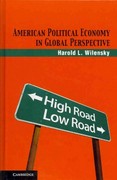3. Carbon Tax: The LLB. government is considering the implementation of a carbon tax to ght dimate change and raise much-needed govemment revenue. They have asked you to help them determine how much gasoline demand will drop and how much revenue will be raised following the implementation of a 111 111] carbon tax. After some rigorous statistical work, you come up with the following table of values - prices and quanties - for gas demand in the short and long run: Short Run Lngg Run Inelastic PS Q5 PL QL QIN $11.1]1] 1201] $11111] i 2111] 11]1]1] $1 .01] 1 101] $1151] 1 1111] 11]1]1] $2.1M] 11]1]1] $1.111] 1 11111] 11]1]1] 113.111] 9111] $1.51] 9111] 11]1]1] 114.110 31111 $2.111] 3111] 11]1]1] 1,1an 71111 $2.51] 11.11] 11]1]1] $6.01] 61111 $3.111] 6111] 11]1]1] $1.01] 51111 $3.51] 5111] 11]1]1] $3.01} 41m $4.111] 4111] 11]1]1] $9.1M] 3111] $4.51] 3111] 11]1]1] $111.1]1] 21111 $5.111] 2111] 11]1]1] 511.1111 1. [111 $5.51] 1111] 11]1]1] 512.1]1] 1] $6.111] 1] 11]1]1] . are 5 tart-nan 'i. Lies; are Jung-run v Lies; and QIN stands for inelastic where there is not demand response I11: change in Price. The quantities in the table represent yearly consumption in gallons For each household in the 1.1.5. You will use this table to answer the questions below. In addition to the information in the table, please make the following assumptions: {1} the average price of gas in the 1.1.5. is $2.01] per gallon; {2} each gallon of gas contains 5.5 lbs. of carbon with 2,1]111] lbs. in a ton; and {3) there are 1 15 million households in the LLB. a. Use the data in the table above to derive and plot curves for inelastic, short-run, and long-run demand for gas in the 1.1.5. In. ssume that in the "very" short run [here is no. demand response by households. How much will the carbon tax cost each household? How much revenue will be raised? c. Now, using your short-run demand curve estimates redo part b. - i.e_1 how much does the carbon tax cost each household and how much revenue does it raise? d. Finally, redo part c. using the values From your long-tun demand curve. How does your answer change in comparison to part c. and why







